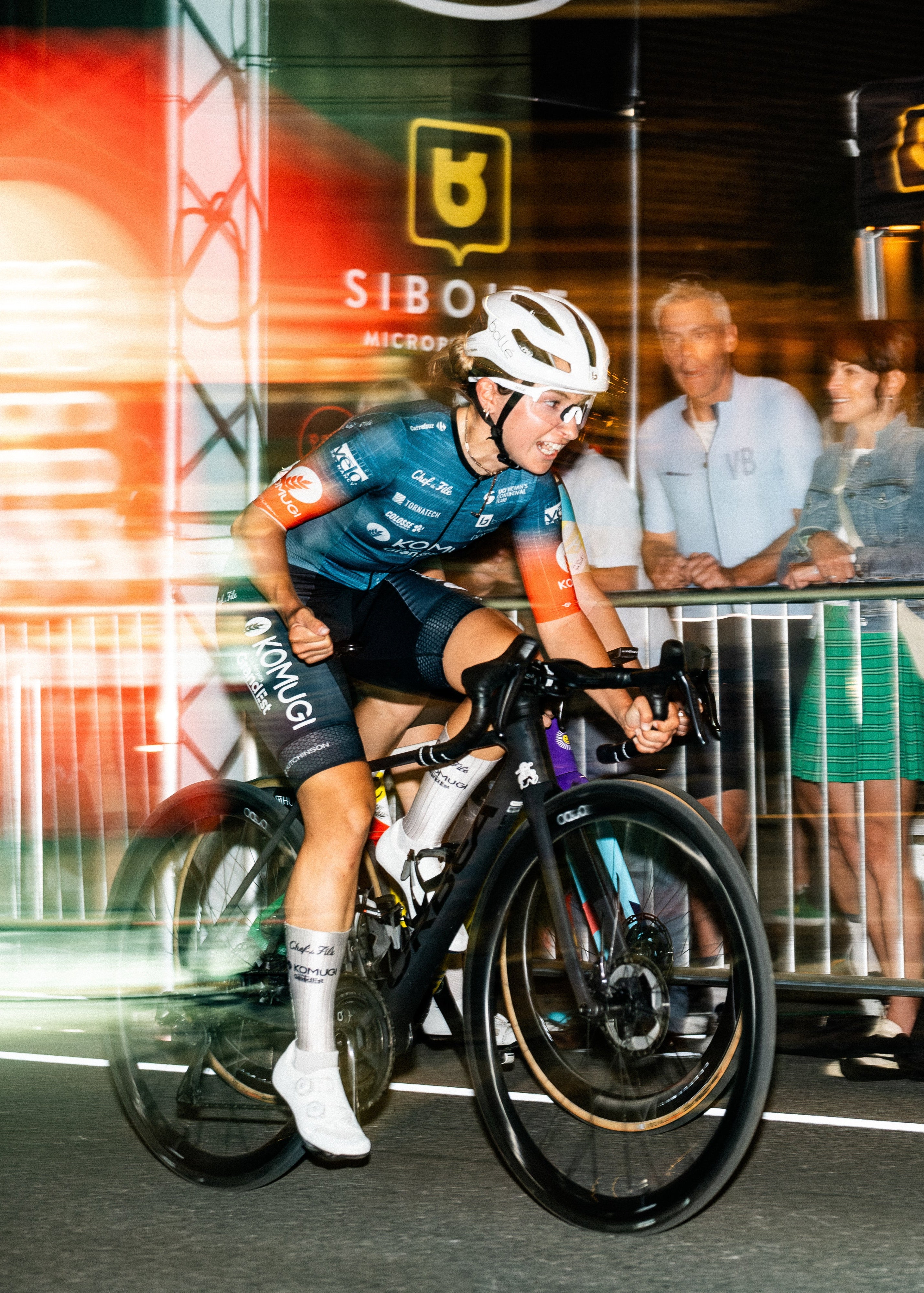
Understanding the 2:1 Ratio
Carbohydrates are the body’s primary energy source during moderate to high-intensity exercise. Replenishing these energy stores is crucial for sustained performance. To design Performance Drink Mix, we partnered with leading food scientists, researchers, and sports nutritionists to develop a deep understanding of the science and apply that to all athletes' needs to optimize their performance. One of the foundational elements of our formula is the use of a 2:1 glucose-to-fructose ratio. This Story explains it.
Science Based
The way your body absorbs and utilizes carbohydrates is key to understanding why this ratio works so well. Glucose is absorbed in the small intestine using sodium-glucose transporters (SGLT1), but this pathway has a limit – it can only process around 60 grams of glucose per hour. Beyond that, additional glucose risks causing stomach issues (Podlogar et al., 2022). Fructose, absorbed through a separate transporter (GLUT5), complements glucose by utilizing a different pathway, enabling athletes to oxidize more carbohydrates overall while avoiding gut discomfort (Rowlands et al., 2015; Jeukendrup, 2011).
That being said, glucose is more efficient. Research shows that glucose oxidation peaks at ~1.0g/min, and fructose oxidation peaks at ~0.6g/min. This explains the importance of maximizing glucose intake first (Podlogar et al., 2022; Jeukendrup, 2011).
For All Athletes
We believe there is no optimal ratio for every athlete; instead, each athlete has an optimal ratio based on their needs. Research shows that the ideal carbohydrate intake depends on factors such as body weight, activity duration, and exercise intensity, with most athletes requiring 30 to 120g of carbohydrates per hour during moderate to high-intensity exercise (Rowlands et al., 2015; Jeukendrup, 2011). While some professional athletes may consume upwards of 120g/hour, studies suggest that this is typically reserved for larger athletes or those performing at extremely high intensities. Importantly, higher intakes do not always translate to increased oxidation and may raise the risk of gastrointestinal discomfort due to lower efficiency (Podlogar et al., 2022).
Before designing our Performance Drink Mix, we conducted a primary research study with 109 athletes across Canada, including cyclists, runners, hockey players, and more. We found that only 5.4% of respondents were consuming more than 90g of carbohydrates per hour, while the majority (84.9%) were consuming between 30–90g/hour. These findings informed the development of our formula, which focuses on efficiency and practicality for real-world athletes.
We designed Performance Drink Mix with a 90g/hour serving size in mind, maximizing glucose oxidation and adding fructose to create a 2:1 ratio.
Research looking at the 2:1 ratio and 1:0.8 at a 90g/hour ingestion rate demonstrates that the 2:1 ratio oxidizes 86% of consumed carbohydrates, compared to 84% with the 1:0.8 ratio (Podlogar et al., 2022). This means more carbohydrates are used by working muscles and fewer remain unoxidized, reducing the likelihood of gut discomfort.
Similarly, when comparing a 2:1 ratio at 90g/hour to a 1:0.8 ratio at 120g/hour, athletes oxidized a higher percentage of carbohydrates with the 2:1 ratio (86% vs. 76%). Although the absolute grams oxidized were higher at 120g/hour, the efficiency decreased, leaving a larger quantity of unoxidized carbohydrates in the gut, which can lead to discomfort and inefficiency (Rowlands et al., 2015; Jeukendrup, 2011; Podlogar et al., 2022).
Who Can Benefit?

Endurance Athletes
Cyclists, runners, triathletes, and swimmers benefit most from the sustained energy and reduced GI distress provided by the 2:1 ratio.

High-Intensity Athletes
Athletes in sports requiring bursts of energy interspersed with endurance can use the ratio to maintain performance throughout long events, games or matches.

Recreational Athletes
Non-competitive athletes can use the 2:1 carbohydrate ratio to improve their workout experience and recovery, especially during prolonged or intense training sessions.
More for Less
At Olway™ we believe in efficiency, empowering All Athletes to perform. This shows up in how we price our products and how we design them, to ensure you are getting More for Less.
In recap, these are the 3 key benefits of the 2:1 ratio.
-
Maximizes carbohydrate oxidation efficiency, ensuring more energy is delivered to working muscles.
-
Minimizes bloating and cramping by leveraging two separate absorption pathways.
-
Works effectively across different carbohydrate intake levels to suit a wide range of athletic needs.
Supporting Information
-
Ingestion: The act of consuming carbohydrates through your mouth.
Absorption: The process of transporting nutrients (like glucose or fructose) from the digestive system into the bloodstream.
Oxidation: The metabolic conversion of carbohydrates into usable energy by the muscles during exercise.
Efficiency: The percentage of ingested carbohydrates that are successfully oxidized and converted to energy, minimizing waste or discomfort. -
1. Podlogar, T., Bokal, Š., Cirnski, S., & Wallis, G. A. (2022). Increased exogenous but unaltered endogenous carbohydrate oxidation with combined fructose-maltodextrin ingested at 120 g h−1 versus 90 g h−1 at different ratios. European Journal of Applied Physiology, 122 (10), 2393–2401. https://doi.org/10.1007/s00421-022-05019-w
2. Rowlands, D. S., Houltham, S., Musa-Veloso, K., Brown, F., Paulionis, L., & Bailey, D. (2015). Fructose–glucose composite carbohydrates and endurance performance: Critical review and future perspectives. Sports Medicine, 45(11), 1561–1576. https://doi.org/10.1007/s40279-015-0381-0
3. Jentjens, R. L. P. G., Achten, J., & Jeukendrup, A. E. (2004). High oxidation rates from combined carbohydrates ingested during exercise. Medicine & Science in Sports & Exercise, 36(9), 1551–1558. https://doi.org/10.1249/01.MSS.0000139785.26530.32
4. Burke, L. M., Hawley, J. A., Wong, S. H. S., & Jeukendrup, A. E. (2011). Carbohydrates for training and competition. Journal of Sports Sciences, 29(sup1), S17–S27. https://doi.org/10.1080/02640414.2011.585473
Olway™ is a sports nutrition brand empowering all athletes to perform.

![Performance Drink Mix [768g]](http://www.olwayperformance.com/cdn/shop/files/DSC03348.jpg?v=1764958556&width=2000)
![Performance Drink Mix [768g]](http://www.olwayperformance.com/cdn/shop/files/DSC03350.jpg?v=1764958556&width=2000)
![Performance Drink Mix [768g]](http://www.olwayperformance.com/cdn/shop/files/Website_Product_Imagery_6.jpg?v=1765851367&width=2000)
![Performance Drink Mix [768g]](http://www.olwayperformance.com/cdn/shop/files/Website_Product_Imagery.jpg?v=1765851367&width=2000)